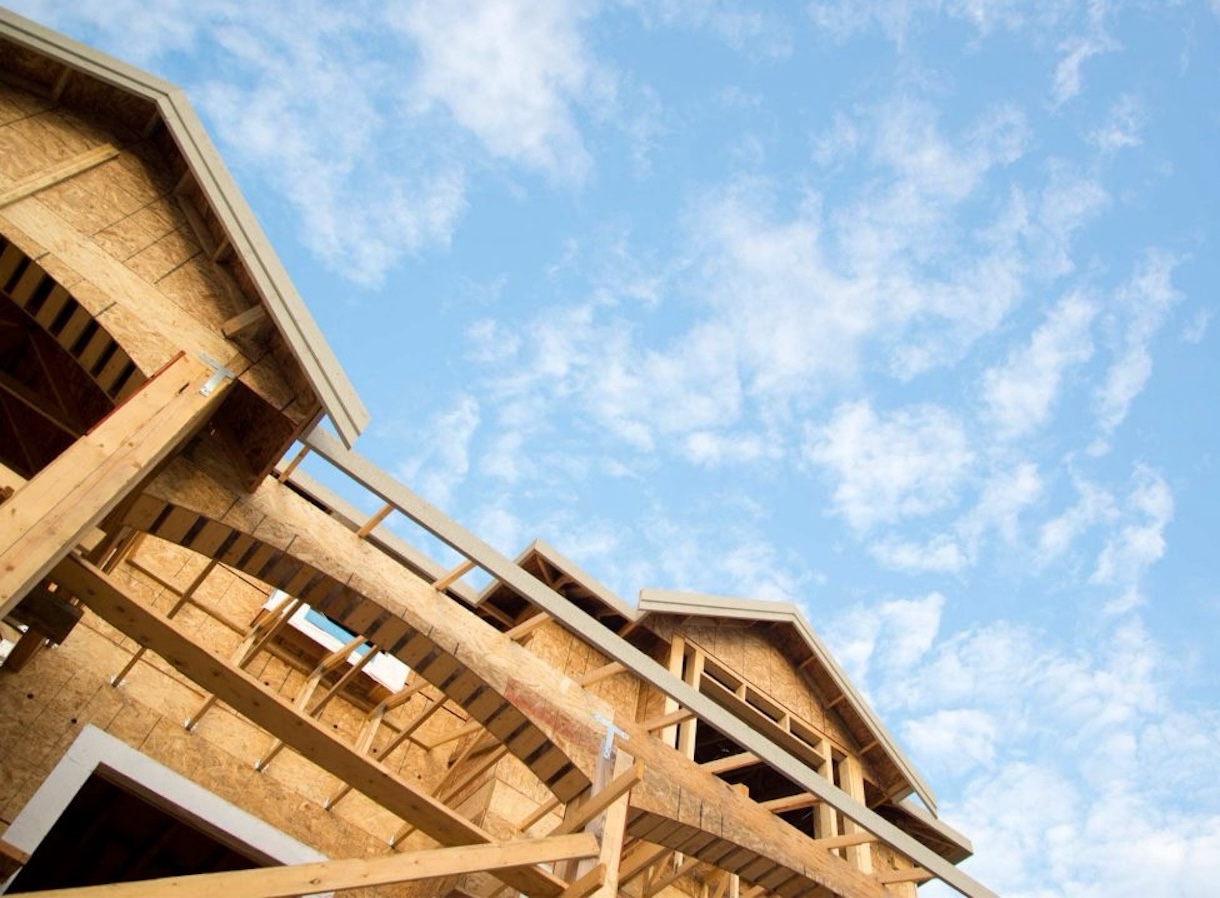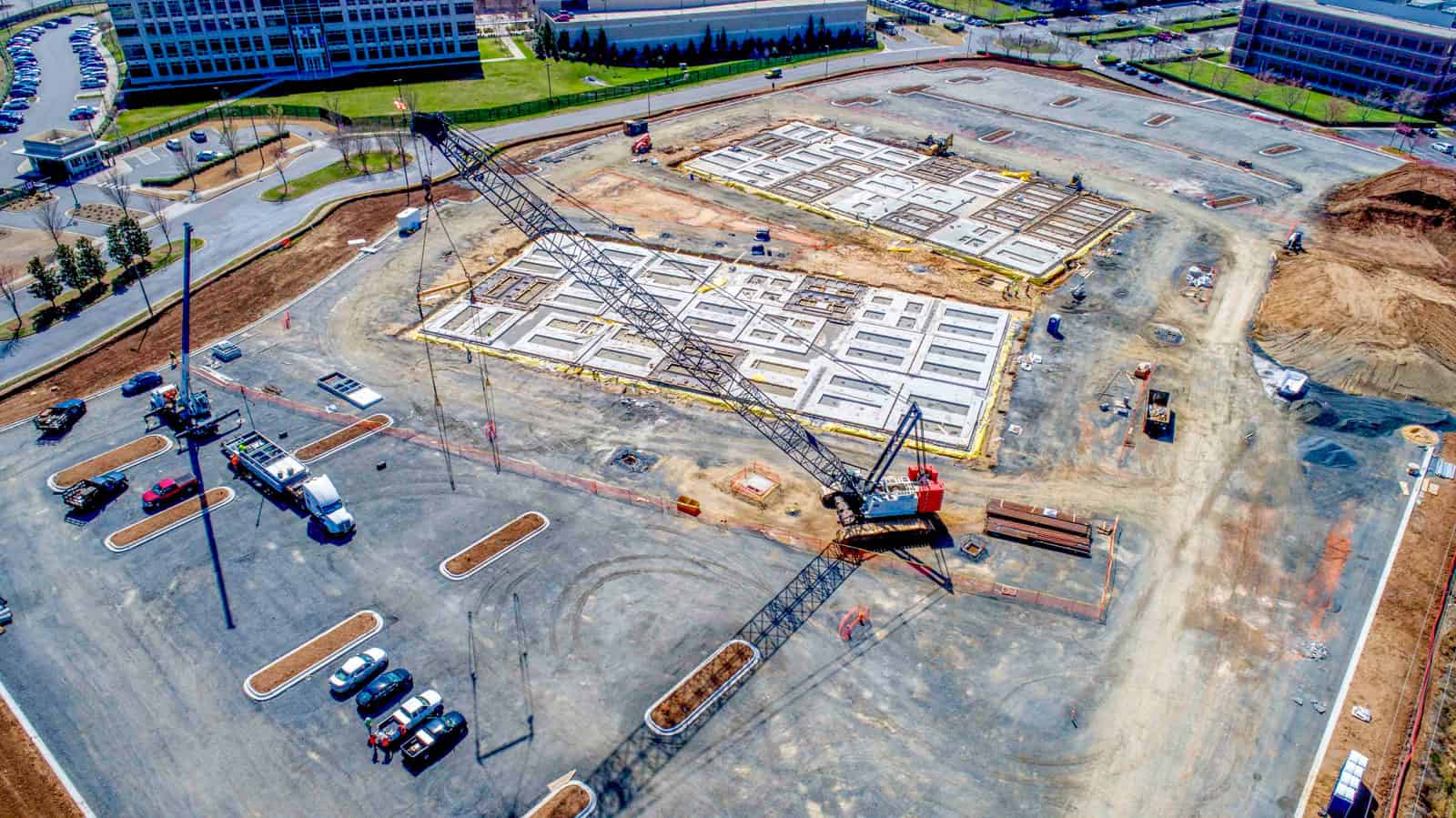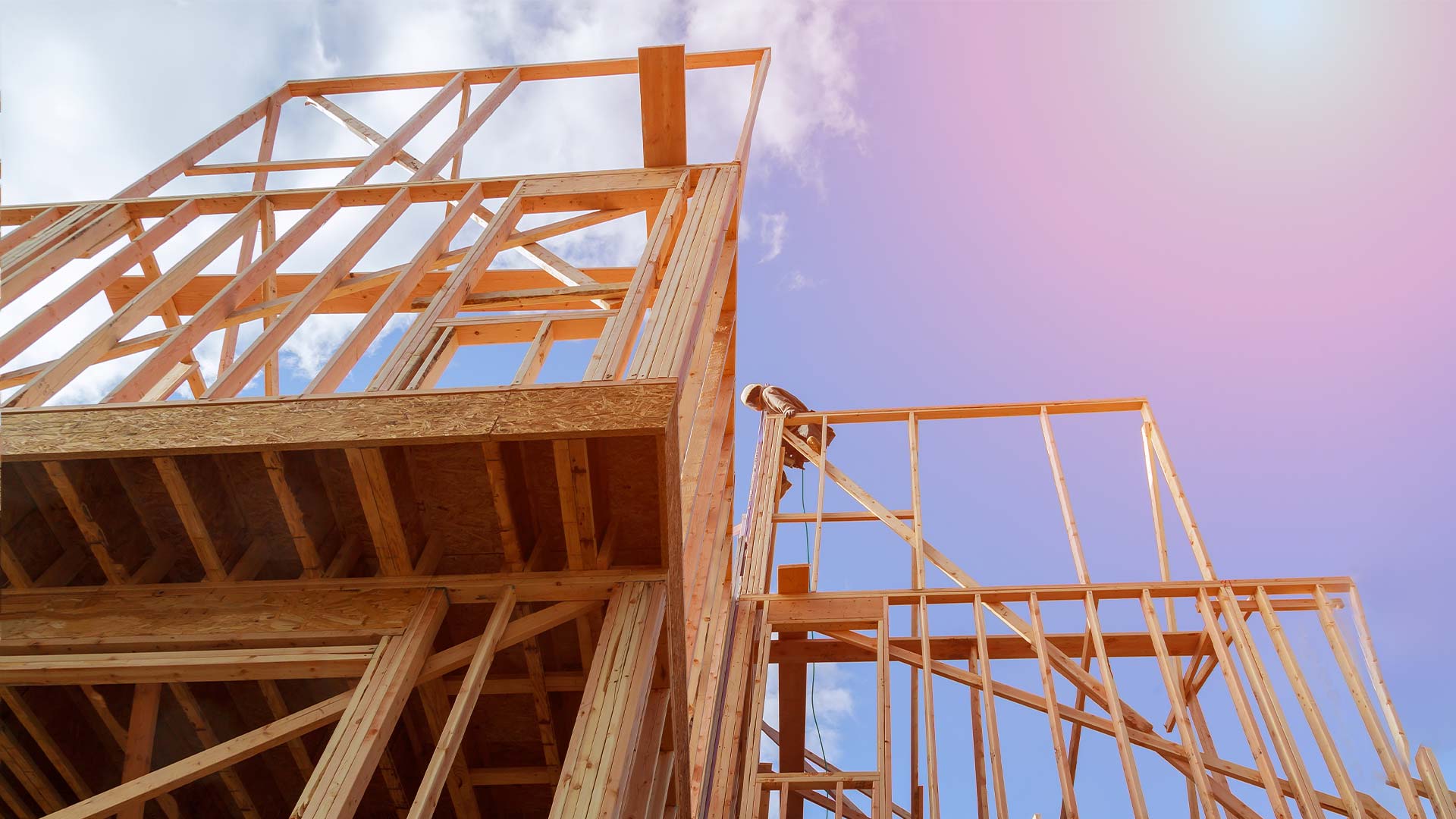Home>diy>Building & Construction>How Long Does New Construction Take


Building & Construction
How Long Does New Construction Take
Modified: October 20, 2024
Learn how long a new construction project takes from start to finish. Discover the factors that impact the timeline and get tips for efficient building construction.
(Many of the links in this article redirect to a specific reviewed product. Your purchase of these products through affiliate links helps to generate commission for Storables.com, at no extra cost. Learn more)
Introduction
Embarking on a new construction project is an exciting endeavor. Whether you are planning to build your dream home, a commercial building, or a renovation project, understanding the timeline for completion is crucial. Many factors influence the duration of a construction project, and having a clear understanding of these factors can help you plan and manage your expectations effectively.
In this article, we will explore the various stages of a typical construction timeline, highlighting the key factors that affect the duration of each phase. By gaining insights into the construction process, you will be better equipped to make informed decisions and ensure a smooth and timely completion of your project.
Buckle up, as we take you on a journey through the stages of construction, from planning and design to the finishing touches and final inspections. Let’s dive in!
Key Takeaways:
- Understanding the factors affecting construction timelines, from site conditions to labor availability, is crucial for planning and managing expectations effectively.
- Each construction phase, from planning and design to finishing touches, plays a vital role in ensuring a successful and timely completion of the project.
Factors Affecting Construction Timeline
Several factors can impact the duration of a construction project. Understanding these factors will help you set realistic expectations and plan accordingly. Here are some key elements that can affect the construction timeline:
- Project Scope and Complexity: The size and complexity of the project play a significant role in determining the duration. Larger and more intricate projects, such as high-rise buildings or custom-designed homes, generally take longer to complete compared to smaller, standardized structures.
- Site Conditions: The condition of the site where the construction will take place can impact the timeline. Factors such as soil stability, drainage, accessibility, and presence of underground utilities or environmental restrictions can affect the pace of work.
- Weather Conditions: Mother Nature can be unpredictable, and weather conditions can significantly influence construction timelines. Extreme weather events, such as heavy rain, snowstorms, or hurricanes, may cause delays and disrupt work schedules.
- Availability of Materials: Timely availability of construction materials is crucial for a smooth construction process. Shortages or delays in sourcing materials can lead to project delays. It is essential to have a reliable supply chain and proper inventory management to avoid unnecessary setbacks.
- Labor Force: The availability and productivity of skilled laborers and subcontractors can impact the construction timeline. A shortage of experienced workers or scheduling conflicts can extend the duration of the project.
- Contractual Agreements: The terms and conditions outlined in the construction contract can affect the project timeline. The contract should clearly define the milestones, deadlines, and potential penalties for delays. Effective communication and collaboration among all parties involved are essential to ensure compliance with the agreed-upon schedule.
- Changes and Modifications: Design changes or modifications during the construction phase can lead to delays. It is crucial to have a well-defined design and scope of work before commencing construction to minimize the need for alterations along the way.
- Permitting and Approvals: Obtaining necessary permits and approvals from local authorities can be a time-consuming process. Delays in obtaining permits or encountering unexpected regulatory requirements can significantly impact the construction timeline.
These are just a few of the many factors that can influence the duration of a construction project. Each project is unique, and it is important to carefully consider these factors and plan accordingly to ensure a successful and timely completion.
Planning and Design Phase
The planning and design phase is the first step in any construction project. It involves developing a comprehensive plan and design that aligns with the client’s vision and requirements. This phase sets the foundation for the entire project and plays a crucial role in determining its timeline.
During the planning and design phase, several key activities take place:
- Project Conceptualization: This involves understanding the client’s objectives, budget, and requirements. Architects and engineers collaborate to create a preliminary concept that outlines the size, layout, and overall design of the project.
- Feasibility Study and Site Analysis: A thorough analysis of the site is conducted to assess its suitability for the proposed project. This includes evaluating factors such as soil condition, topography, accessibility, and utilities. A feasibility study examines the economic, environmental, and regulatory aspects of the project.
- Architectural and Engineering Design: Based on the project concept, architects and engineers develop detailed design plans, including floor plans, elevations, structural drawings, and MEP (Mechanical, Electrical, Plumbing) systems. These designs are refined through feedback and collaboration with the client.
- Permitting and Approvals: The design plans are submitted to the relevant local authorities for review and approval. This includes obtaining permits for construction, zoning, environmental compliance, and any other necessary regulatory approvals.
- Cost Estimation and Budgeting: A detailed cost estimation is prepared based on the design plans, incorporating materials, labor, equipment, and other expenses. The budget is finalized, taking into account contingency and escalation factors.
The duration of the planning and design phase can vary depending on the complexity and scale of the project. Simple projects may take a few weeks, while larger and more intricate structures can require several months. It is important to allow sufficient time for thorough planning and design to ensure the smooth progression of the project.
By investing time and effort in the planning and design phase, potential issues and challenges can be identified and addressed early on, minimizing the risk of costly delays and changes during the construction phase. Effective communication and collaboration between the client, architects, engineers, and other stakeholders are essential in this phase to establish clear goals and expectations for the project.
Permitting and Approval Process
The permitting and approval process is a critical phase in any construction project. It involves obtaining the necessary permits and approvals from local authorities and regulatory bodies to ensure compliance with building codes and regulations. This phase can significantly impact the overall timeline of the project.
Here are the key steps involved in the permitting and approval process:
- Documentation and Submission: The construction documents, including architectural and engineering plans, along with other required paperwork, are compiled and submitted to the relevant local authorities. This may include building departments, zoning boards, environmental agencies, and other governing bodies.
- Review and Assessment: The submitted documents are thoroughly reviewed by the respective authorities to verify compliance with building codes, zoning regulations, environmental standards, and other applicable requirements. The review process often involves multiple rounds of feedback and revisions to address any comments or concerns raised.
- Permit Issuance: Once the plans and documents meet all the necessary requirements, the permits are issued. These permits allow the construction to commence legally. Depending on the project scope, multiple permits may be required, such as building permits, plumbing permits, electrical permits, and mechanical permits.
- Inspections: Throughout the construction process, inspections are conducted at various stages to ensure compliance with approved plans and relevant regulations. Inspectors evaluate the quality of work, adherence to safety codes, and proper installation of systems and components. Inspections may be required for foundation, framing, plumbing, electrical, fire safety, and other key milestones.
- Final Approvals: Once all inspections have been successfully completed, and any necessary corrections or modifications have been made, final approvals are obtained. These approvals certify that the construction has been carried out in accordance with the approved plans and applicable regulations, allowing the project to proceed towards completion.
The time required to complete the permitting and approval process can vary significantly based on the location, size, and complexity of the project, as well as the efficiency of the local authorities. It is essential to start this process well in advance of the planned construction start date to avoid unnecessary delays. Working closely with knowledgeable professionals and engaging in proactive communication with the permitting authorities can help streamline the process.
Understanding and adhering to the permitting and approval requirements is crucial. Failure to obtain the necessary permits or maintain compliance during the construction process can result in penalties, fines, or even a halt to the project. Therefore, it is essential to allocate adequate time and resources to navigate this phase effectively.
Site Preparation
Before the actual construction work can begin, the site must undergo thorough preparation to create a suitable foundation for the project. Site preparation is a crucial phase that sets the stage for the construction process and plays a significant role in determining the overall timeline.
Here are the key steps involved in site preparation:
- Clearing and Demolition: If the construction site contains existing structures or vegetation, they will need to be cleared and demolished to make way for the new construction. This involves removing any debris, hazardous materials, and obstacles that may impede the construction process.
- Surveying and Excavation: The next step is to survey the site and mark the boundaries, ensuring accurate positioning of the project. Excavation is then conducted to remove excess soil, rocks, or any obstructions that may interfere with the construction work. This process may also include grading and leveling the site to achieve the desired elevation.
- Utilities and Infrastructure: Site preparation involves installing or relocating necessary utilities and infrastructure systems. This includes connections for water, electricity, sewage, and drainage. Proper planning and coordination with utility companies are essential to ensure smooth installation and avoid future disruptions.
- Access Roads and Temporary Facilities: During site preparation, access roads are constructed to facilitate the movement of construction vehicles and equipment. Temporary on-site facilities such as offices, storage areas, and restrooms may also be set up to support the construction crew and ensure efficient operations.
- Erosion Control and Environmental Protection: Implementing erosion control measures is crucial to prevent soil erosion and minimize environmental impact during construction. Measures such as retaining walls, sediment control barriers, and erosion control blankets are put in place to ensure compliance with environmental regulations.
- Security and Safety: Site preparation involves implementing safety measures to protect workers and the public. This includes setting up temporary fencing, safety signage, and establishing protocols for hazard management and incident reporting.
The duration of site preparation depends on various factors, including the size of the site, the complexity of the project, and the condition of the land. It is crucial to allocate adequate time and resources to complete the necessary site preparation tasks for a smooth transition into the construction phase.
Proper site preparation is essential for creating a safe and efficient construction environment. By investing time and effort into this phase, potential obstacles and challenges can be identified and addressed early on, minimizing the risk of delays and ensuring a successful construction project.
Foundation Construction
The foundation is one of the most critical components of any construction project, providing a stable and secure base for the structure. The process of foundation construction involves building the supporting structure that transfers the weight of the building to the ground. It is a significant phase in the construction timeline and requires careful planning and execution.
Here are the key steps involved in foundation construction:
- Excavation: Once the site preparation is complete, the excavation process begins. This involves digging trenches and removing soil to create space for the foundation. The depth and dimensions of the excavation depend on the size and design of the building.
- Footings: Footings are the concrete structures that support the foundation walls. They are generally wider than the foundation walls to distribute the weight of the structure evenly. The footings are reinforced with steel bars, also known as rebar, to enhance their strength.
- Foundation Walls: Once the footings are in place, the foundation walls are constructed. These walls provide the structural integrity and support for the entire building. They are typically made of concrete or concrete blocks and reinforced with steel rebar for added strength.
- Waterproofing and Insulation: Waterproofing and insulation measures are implemented to protect the foundation from water damage and provide insulation for the building. This may involve applying a waterproofing membrane to the exterior of the foundation and installing insulation materials to prevent heat loss.
- Slab or Basement Construction: Depending on the design and requirements, the foundation construction may include the placement of a concrete slab or the creation of a basement. The slab provides a level surface for the building, while a basement adds additional usable space below ground level.
- Backfilling: After the concrete has cured and the foundation is structurally secure, backfilling is done to refill the excavated area around the foundation. Care is taken to compact the soil properly to avoid future settling or damage to the foundation.
The duration of foundation construction depends on factors such as the size and complexity of the structure, site conditions, and the efficiency of the construction crew. It is important to ensure that the foundation is constructed accurately and meets all necessary building codes and structural requirements.
A solid and well-built foundation is essential for the structural integrity and longevity of a building. Taking the time to properly construct the foundation sets the stage for the rest of the construction process, ensuring a stable and secure structure.
The timeline for new construction can vary depending on the size and complexity of the project. On average, it can take anywhere from 6 months to 2 years to complete a new construction project. Factors such as permits, weather, and supply chain issues can also impact the timeline.
Framing and Structural Work
The framing and structural work phase is a significant milestone in the construction process, as it involves creating the skeletal framework of the building. This phase focuses on constructing the walls, floors, and roof structure that will form the basis of the final structure. Skilled carpenters and construction workers play a vital role in this phase, ensuring precision and adherence to building codes.
Here are the key steps involved in the framing and structural work phase:
- Layout and Marking: Using the architectural plans as a guide, the layout is marked on the foundation to indicate the placement of walls, openings, and structural elements.
- Wall Framing: Studs and headers are installed to create the framework for the exterior and interior walls. This involves measuring, cutting, and assembling the wooden or metal framing members to create the desired wall shapes and dimensions.
- Floor and Ceiling Framing: Floor joists are installed to support the weight of the flooring materials, while ceiling joists or trusses are set in place to provide structural support for the roof. This step involves precise measurement and alignment to ensure a level and sturdy structure.
- Roof Truss Installation: In cases where trusses are used, prefabricated roof trusses are brought in and installed to create the roof structure. These trusses provide the framework for the roof and distribute the weight evenly to the supporting walls.
- Sheathing and Subfloor Installation: Once the framing is completed, sheathing boards or panels are attached to the exterior walls, providing a solid base and structural bracing. Additionally, subfloor materials are installed on the floor joists to create a stable and flat surface for the flooring.
- Door and Window Openings: Openings for doors and windows are framed, ensuring proper size, alignment, and structural support. This step involves precise measurements and installation of headers and rough openings to accommodate the doors and windows.
- Structural Reinforcement: Bracing and strapping are installed at key locations to reinforce the structural integrity of the building. This includes adding diagonal bracing to walls, securing connections between framing elements, and integrating necessary structural supports.
The duration of the framing and structural work phase depends on the size, complexity, and design of the building. Larger and more intricate structures typically require more time for framing and structural elements to be completed. It is crucial to ensure that all framing work meets local building codes and standards to ensure the safety and stability of the structure.
During this phase, the building really starts to take shape, and you can get a sense of the layout and spaces within. The precision and attention to detail exhibited during the framing and structural work phase set the foundation for the next stages of construction, bringing you one step closer to realizing your construction project.
Roofing and Exterior Work
The roofing and exterior work phase is a crucial aspect of the construction process, as it involves the installation of the roof and the completion of the building’s exterior envelope. This phase not only provides protection from the elements but also contributes to the aesthetic appeal and energy efficiency of the structure.
Here are the key steps involved in the roofing and exterior work phase:
- Roofing Material Installation: The roofing material, such as asphalt shingles, metal panels, clay tiles, or other options, is installed according to the manufacturer’s instructions. This involves careful measurement, cutting, and placement to ensure a watertight and secure roof.
- Gutter and Downspout Installation: Gutters and downspouts are installed along the roof edges to collect and redirect rainwater away from the building’s foundation. This helps prevent water damage and ensures proper drainage.
- Siding or Cladding Installation: The exterior walls are clad or covered with the chosen siding material, such as vinyl, wood, brick, stucco, or other options. The siding not only enhances the building’s visual appeal but also provides protection against the elements.
- Exterior Trim: Trim is installed around windows, doors, corners, and other areas to provide a finished look and protect the building envelope. This may include fascia boards, corner boards, soffits, and other decorative or functional trims.
- Windows and Doors: Windows and doors are installed, ensuring proper alignment, weather sealing, and functionality. This includes securing them in place, installing insulation, and applying exterior trim or flashing for a seamless finish.
- Exterior Finishes: Depending on the design and specifications, additional exterior finishes may be applied, such as paint, stain, or protective coatings. This helps enhance the durability of the materials and adds the final touches to the building’s facade.
- Exterior Systems: Various exterior systems are installed during this phase, including ventilation systems, exterior lighting, security features, and other components necessary for the functionality and comfort of the building.
The duration of the roofing and exterior work phase depends on factors such as the size and complexity of the building, the chosen materials, and weather conditions. It is important to work with experienced contractors and ensure installation is done correctly to achieve long-term durability and energy efficiency.
The roofing and exterior work phase not only serves practical purposes but also adds the final aesthetic touches to the building. It is an exciting stage as the exterior takes shape, reflecting the design vision and bringing the construction project closer to completion.
Interior Work
The interior work phase is where the building truly starts to transform into a functional and livable space. This phase involves the installation of interior components, finishes, and systems that make the building comfortable, visually appealing, and ready for occupancy. From electrical and plumbing systems to flooring and paint, this phase brings the project closer to its final form.
Here are the key steps involved in the interior work phase:
- Electrical and Plumbing Systems: The installation of electrical wiring, outlets, switches, and lighting fixtures is carried out according to the approved plans. Plumbing systems, including pipes, fixtures, and drainage, are also installed to ensure proper functionality throughout the building.
- Heating, Ventilation, and Air Conditioning (HVAC): HVAC systems, including ductwork, vents, air conditioning units, and heating elements, are installed to regulate and maintain a comfortable indoor climate.
- Insulation and Drywall: Insulation materials are installed in the walls, ceilings, and floors to improve energy efficiency and soundproofing. Drywall sheets are then installed, followed by taping, mudding, and sanding to create smooth, seamless surfaces ready for paint or other wall finishes.
- Flooring: Various types of flooring materials are installed, such as hardwood, tiles, carpet, or laminate, depending on the design and functional requirements of each space. Care is taken to ensure proper installation, leveling, and finishing.
- Cabinetry, Millwork, and Built-ins: Cabinets, shelves, and other built-in features are installed in kitchens, bathrooms, and other areas as per the design plans. Millwork, such as baseboards, crown molding, and window trim, are also added to enhance the aesthetics of the interior.
- Painting and Wall Finishes: Walls, ceilings, and other surfaces are primed and painted with the chosen colors, textures, or wall coverings. This step brings personality and style to the interior spaces.
- Doors and Hardware: Interior doors, along with their handles, hinges, and other hardware, are installed. This includes closet doors, bathroom doors, and any other interior entryways.
- Fixtures and Equipment: The installation of fixtures, such as lighting fixtures, sinks, faucets, toilets, showers, and appliances, is carried out in kitchens, bathrooms, and other areas as per the design specifications.
- Finishing Touches: The final touches are applied, including the installation of mirrors, towel bars, closet organizers, and other accessories to complete the interior spaces and make them functional and ready for use.
The duration of the interior work phase varies depending on the size of the building, the complexity of the design, and the number of finishes and systems to be installed. Attention to detail and quality workmanship are crucial during this phase, as it directly impacts the functionality, aesthetics, and overall satisfaction of the occupants.
The interior work phase brings the building to life, turning it into a personalized and functional space. It is an exciting stage as the vision and design concepts come to fruition, creating an inviting and comfortable environment.
Mechanical, Electrical, and Plumbing (MEP) Systems Installation
The installation of mechanical, electrical, and plumbing (MEP) systems is a crucial phase in the construction process. MEP systems provide essential services and functionality to the building. This phase involves the careful installation of systems such as heating, ventilation, and air conditioning (HVAC), electrical wiring and fixtures, and plumbing infrastructure to ensure the efficient operation of the building.
Here are the key steps involved in the MEP systems installation phase:
- Electrical Installation: Electricians install the electrical wiring, outlets, switches, and distribution panels according to the approved electrical plans. This includes ensuring proper grounding, adherence to safety codes, and the installation of lighting fixtures and electrical appliances throughout the building.
- Heating, Ventilation, and Air Conditioning (HVAC) Installation: HVAC systems are installed to regulate temperature, control humidity, and provide ventilation throughout the building. This includes the installation of air handlers, ductwork, vents, and the connection of HVAC units to the building’s electrical and control systems.
- Plumbing System Installation: The plumbing system installation includes the installation of pipes, fixtures, water heaters, drainage systems, and sewage disposal systems. Plumbers work closely with other trades to ensure proper coordination and installation, including connections to water mains and sanitary sewer lines.
- Fire Protection System Installation: The installation of fire protection systems, including fire alarms, sprinklers, fire extinguishers, and emergency lighting, is crucial to ensure the safety of occupants and compliance with fire codes and regulations.
- Energy Management Systems: Technicians install energy management systems to monitor and control energy usage throughout the building. This may include the installation of sensors, control panels, and software interfaces to optimize energy efficiency and reduce operational costs.
- Testing and Commissioning: After the installation of MEP systems, thorough testing and commissioning are carried out to ensure proper functionality, efficiency, and compliance with design specifications and regulatory requirements. This involves functional testing, balancing systems, and adjusting controls to achieve optimum performance.
- Documentation and Training: Comprehensive documentation is prepared, including as-built drawings, operation manuals, and maintenance guidelines for the MEP systems. Training may be provided to the building owners, facility managers, or occupants on the proper operation and maintenance of the MEP systems.
The duration of the MEP systems installation phase can vary depending on the complexity and size of the building, as well as the coordination required among different trades. Careful planning and coordination are essential to ensure the seamless integration of MEP systems and avoid delays or conflicts during installation.
MEP systems are the lifeline of the building, providing vital services for comfort, safety, and functionality. Proper installation and adherence to industry standards and codes are crucial to ensure the efficient operation and durability of these systems for years to come.
Finishing Touches and Final Inspections
The finishing touches and final inspections phase is the last step in the construction process before the building is ready for occupancy. This phase involves adding the final aesthetic and functional elements to the building, as well as conducting thorough inspections to ensure compliance with building codes, regulations, and design specifications.
Here are the key steps involved in the finishing touches and final inspections phase:
- Interior Finishes: Any remaining interior finishes, such as paint touch-ups, installation of trim, and final cleaning, are carried out during this phase. This ensures a polished and visually appealing interior space.
- Fixtures and Equipment Installation: The installation of fixtures, equipment, and accessories is completed. This includes the installation of lighting fixtures, mirrors, towel bars, cabinetry hardware, and any additional items necessary for the functionality and aesthetics of the building.
- Final Cleaning: A thorough cleaning is conducted to ensure that the building is free from construction debris, dust, and any other remnants of the construction process. This prepares the building for occupancy and showcases its true potential.
- Punch List: A punch list is created, which includes any outstanding tasks, minor repairs, or touch-ups identified during the final inspections. These items are addressed to ensure completion and quality before the final handover.
- Final Inspections: Building officials and inspectors conduct a series of final inspections to verify that the construction has been completed in compliance with all building codes and regulations. This includes inspections of the electrical, plumbing, fire protection, structural, and other key systems.
- Certificate of Occupancy: Once all inspections are successfully completed, a Certificate of Occupancy (CO) is issued by the local authorities. This certifies that the building is safe and meets all applicable codes and regulations for occupancy.
- Final Documentation and Handover: Comprehensive documentation, including as-built drawings, operation manuals, warranties, and certificates, is compiled and handed over to the building owner or facility manager. This ensures that they have all the necessary information for the operation, maintenance, and future management of the building.
The duration of the finishing touches and final inspections phase depends on the size and complexity of the building, as well as the extent of any outstanding tasks identified during the inspections. Attention to detail and prompt resolution of any issues are vital to achieve a seamless and successful handover of the completed building.
Completing the finishing touches and final inspections signifies the end of the construction journey and paves the way for the building’s occupancy. It is a critical stage that ensures the building meets all necessary standards, and its various components are functioning properly, providing a safe and welcoming space for its occupants.
Conclusion
Undertaking a construction project requires careful planning and a deep understanding of the various stages involved. From the initial planning and design phase to the finishing touches and final inspections, each step plays a crucial role in ensuring a successful and timely completion of the project.
Throughout the construction timeline, several factors can impact the duration, such as the project scope, site conditions, weather, availability of materials and skilled labor, and the permitting and approval process. It is important to consider these factors and allocate sufficient time and resources to each phase to avoid unnecessary delays. Effective communication and collaboration with architects, contractors, and other stakeholders are key to keeping the project on track.
The planning and design phase sets the foundation for the entire project, followed by the permitting and approval process to acquire necessary regulatory permissions. Site preparation creates the groundwork, and foundation construction provides the stable base upon which the structure is built. Framing and structural work give the building its shape, while roofing and exterior work protect it from the elements and enhance its visual appeal.
Interior work transforms the building into a functional and livable space, with careful installation of MEP systems providing essential services such as heating, cooling, electrical power, and plumbing. The finishing touches phase adds the final aesthetic elements and ensures all systems are functioning properly before undergoing final inspections, obtaining the Certificate of Occupancy, and completing the handover process.
As the construction process comes to an end, it is important to reflect on the hard work, dedication, and collaboration required to bring a construction project to fruition. The journey from conceptualization to completion is filled with challenges and milestones, but with careful planning and a knowledgeable team, your vision can become a reality.
Remember that construction projects are dynamic, and unexpected challenges may arise along the way. Flexibility, adaptability, and effective project management are key in overcoming these hurdles and keeping the project on schedule.
Whether you are constructing a home, a commercial building, or undertaking a renovation, understanding the construction timeline and the various stages involved is crucial. By arming yourself with knowledge and partnering with experienced professionals, you can navigate the construction process successfully and achieve a finished project that meets your goals, exceeds expectations, and stands the test of time.
Frequently Asked Questions about How Long Does New Construction Take
Was this page helpful?
At Storables.com, we guarantee accurate and reliable information. Our content, validated by Expert Board Contributors, is crafted following stringent Editorial Policies. We're committed to providing you with well-researched, expert-backed insights for all your informational needs.














0 thoughts on “How Long Does New Construction Take”